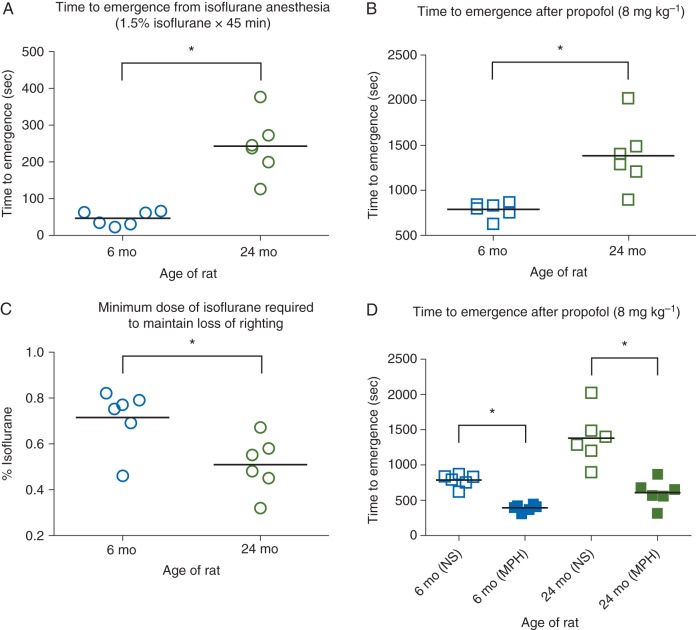Fig 1.
(a) Scatter plot of time to emergence after isoflurane anaesthesia (1.5% inhaled for 45 min) in young adult (6–8 months old; blue circles) and aged (24–26 months old; green circles) F344 rats. Return of righting was used to define emergence. (b) Scatter plot of time to emergence from propofol anaesthesia (8 mg kg−1 i.v.) in young adult (blue squares) and aged (green squares) F344 rats. (c) Scatter plot of minimum isoflurane dose necessary to maintain loss of righting in young adult (blue circles) and aged (green circles) F344 rats. (d) Scatter plots of time to emergence from propofol anaesthesia (8 mg kg−1 i.v.) in young adult (filled blue squares) and aged (filled green squares) F344 rats that received methylphenidate (MPH; 5 mg kg−1 i.v.). The data from (b) are shown again here to provide direct comparison with controls (NS: normal saline). For each data set, the horizontal line represents the mean. *Significant difference between groups with 95% confidence.

